The butterfly roof, also known as a V-roof or an inverted roof, first emerged during the mid-20th century as an attempt to break free from the conventions of the past. A striking break from flat or gable roofs, two opposing slopes that meet at a central point still inspires architects for dramatic designs.
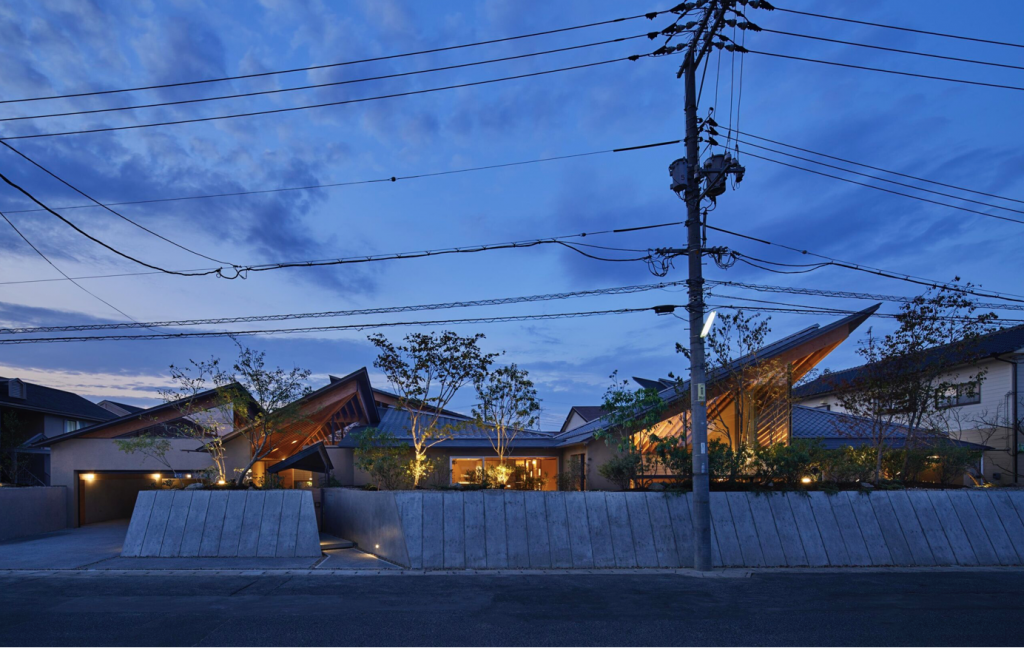
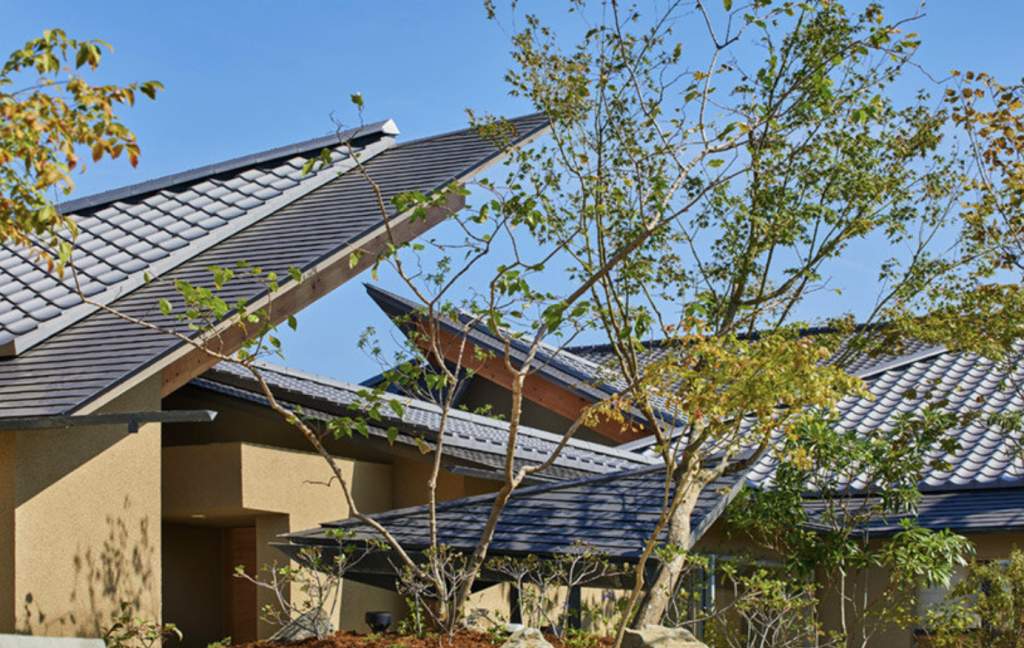
Butterfly House by UID Architects (also header image)
Developed as a tea ceremony house, Butterfly House by Japanese studio UID Architects takes shape as a cluster of overlapping micro dwellings, each topped with an inverted roof plane. Because of that the building is reminiscent of a small village with numerous alleys and a complex canopy above.

Butterfly House by UID Architects
Inverted roofs, with their dramatic angled surfaces, lend the building a striking appeal. At night, the underside of the roof planes are illuminated to become an array of surfaces emitting a warm glow.
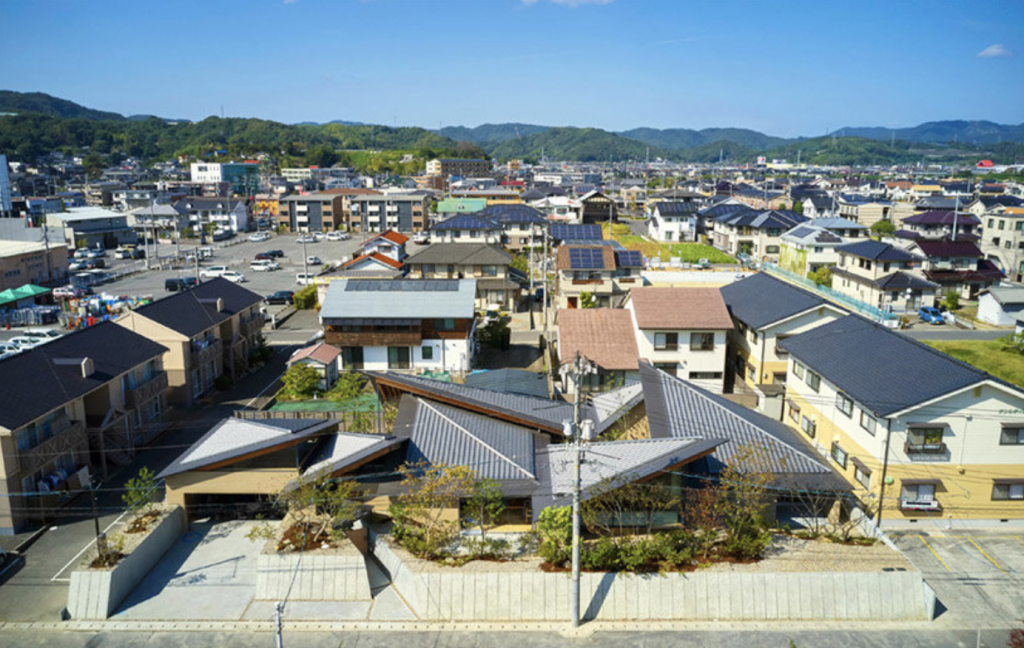
Butterfly House by UID Architects
However, the butterfly roof appears to be as functional as it is visually compelling. These sloping surfaces act as rainwater collectors, avoiding leaks and allowing occupants to reuse collected water for domestic purposes.
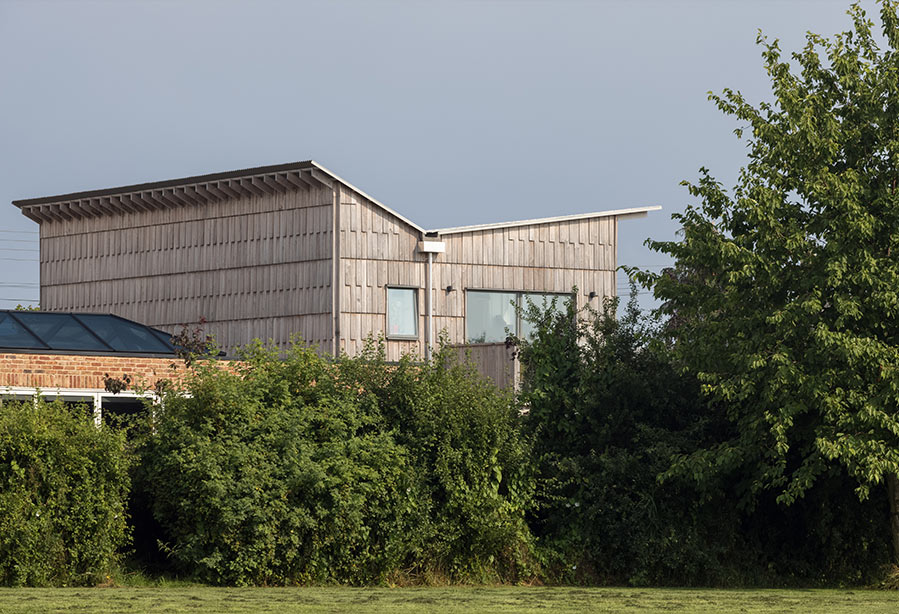
Wuduhus by Mole Architects
The design concept of the Wuduhus house by Cambridge-based firm Mole Architects uses the inverted roof to enhance the building’s energy-efficiency. Located on the flat fenland landscape of Ramsey Heights in the UK, the longest side of the residence is positioned facing south to take advantage of the solar gain, thus the choice of the butterfly roof is essential, along with the application of high-reaching eaves to secure privacy.
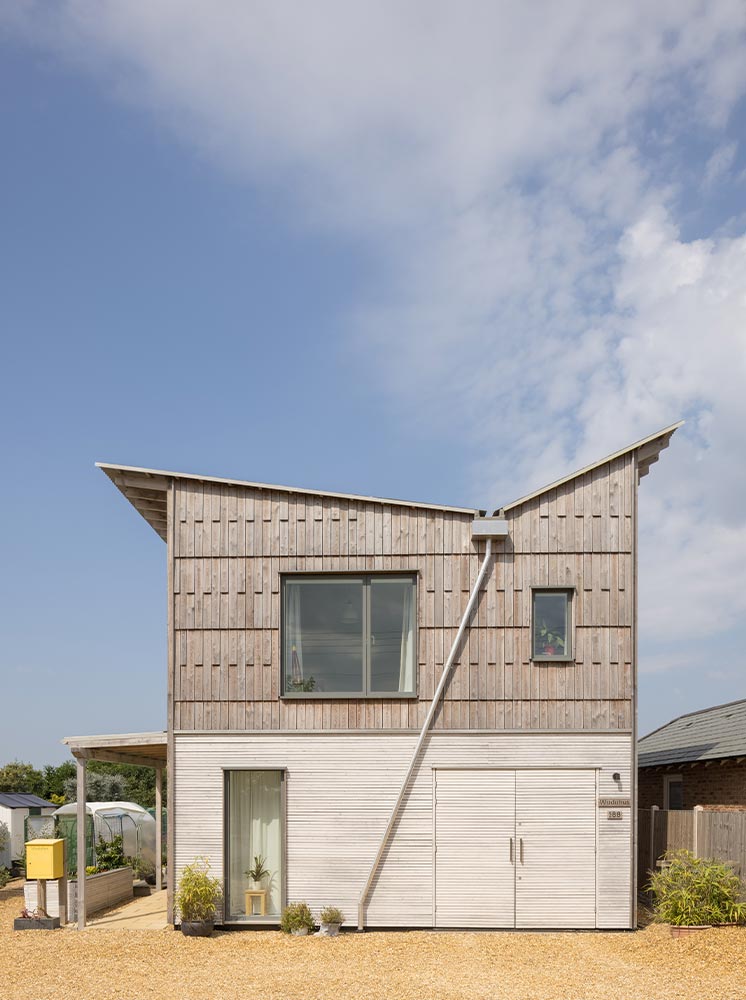
Wuduhus by Mole Architects
The construction of the residence follows the principles of Passivhaus, with the house’s energy use regularly hovering close to zero. The highly insulated frame eliminates the need for a central heating system, while solar power can be used during winter days, requiring minimal additional heat sources. A mechanical ventilation and heat recovery system is fitted into the construction. The system draws stale moist air from bathrooms and kitchens and passes it through a heat exchanger, which helps preheat fresh air with only minor heat losses.
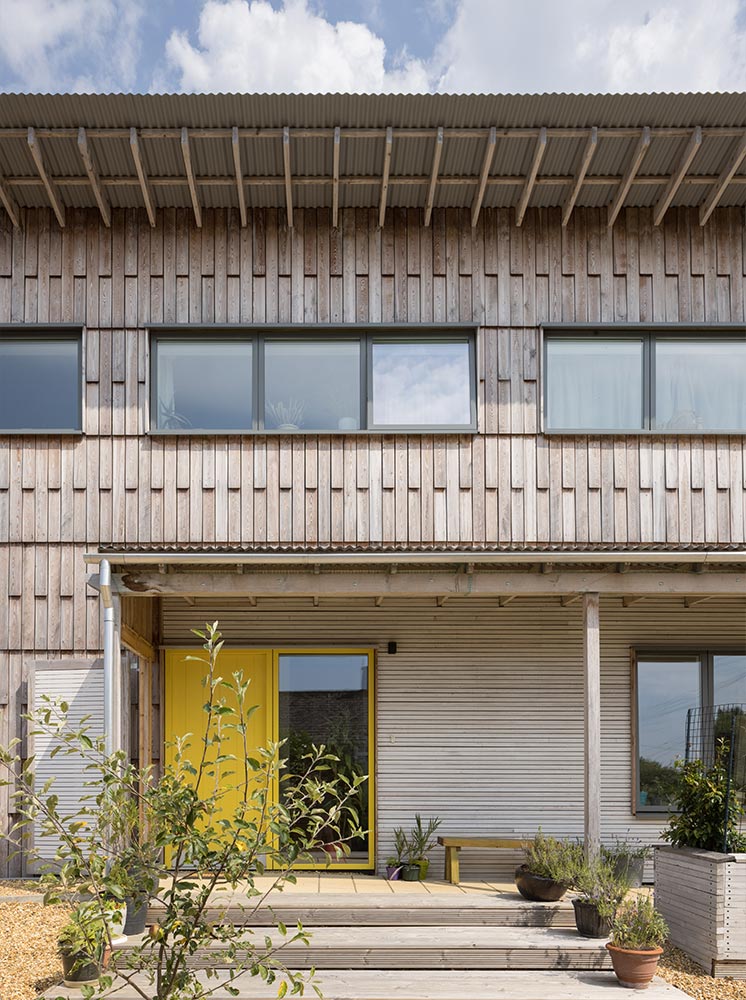
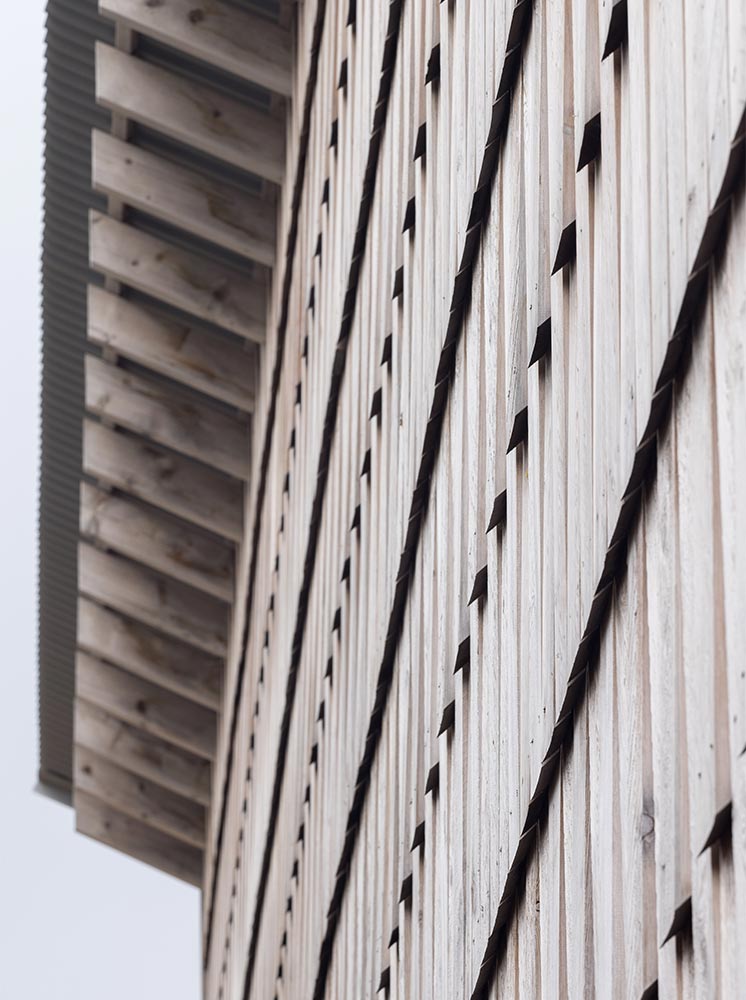
Wuduhus by Mole Architects
The material palette of the building draws from typical fenland agricultural barns. The upper floor is clad in rough overlapping larch boards, which switches to a finer, smooth white stained wood skin for the lower level. Offcut cladding pieces have been reused for garden planters.
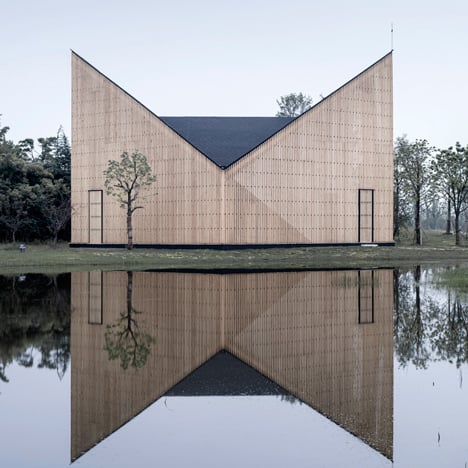
Nanjing Wanjing Garden Chapel by AZL Architects
Designed to host weddings and other religious services, Nanjing Wanjing Garden Chapel by Chinese studio AZL Architects is also characterized by a distinctive butterfly roof, covered by dark asphalt shingles. This design feature gives the square-planned building two corners that pitch upwards providing enough height for a large cross on the west facade and two that dip down giving height to the church hall beneath.
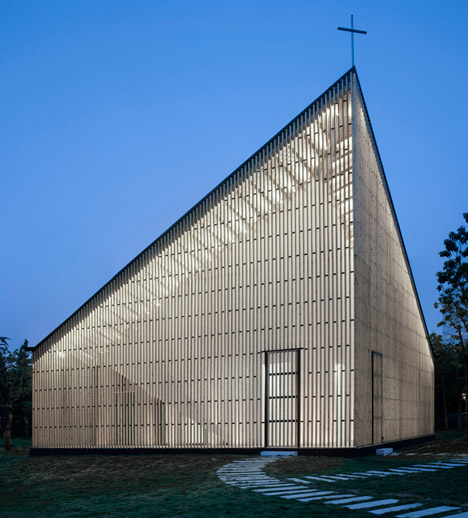
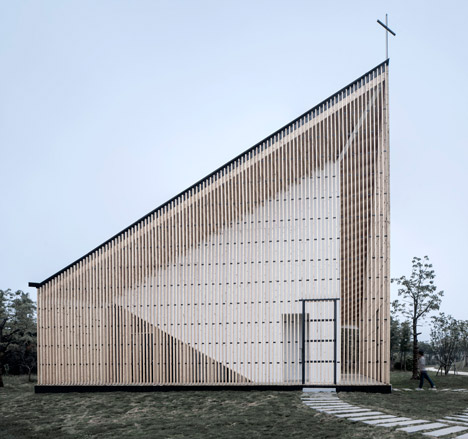
Nanjing Wanjing Garden Chapel by AZL Architects
Below the roof, a double-layered system creates a uniquely interesting oriental architectural space using light as an important means for the religious expressions. The double-shell facade consists of solid white walls, screened behind a semi-transparent wooden skin.
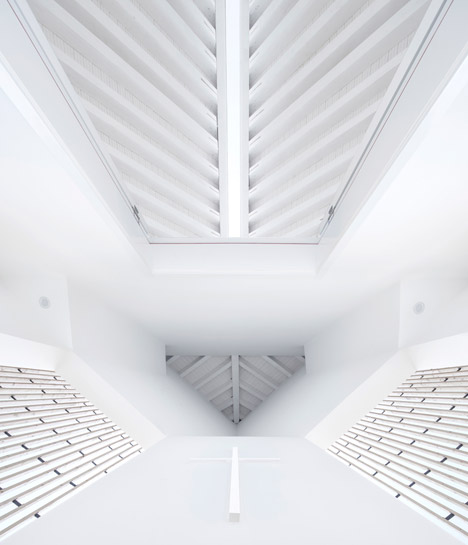
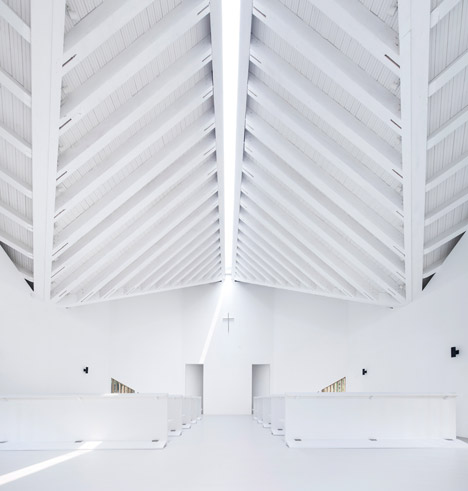
Nanjing Wanjing Garden Chapel by AZL Architects
While the outer layer filters the view outside, implying the start of a religious spatial experience, the inner shell is more closed, allowing natural light to penetrate only through openings on roof and walls. Spotlights are angled into the eaves, where all the axis of the building meet, to emphasize the height of the space.